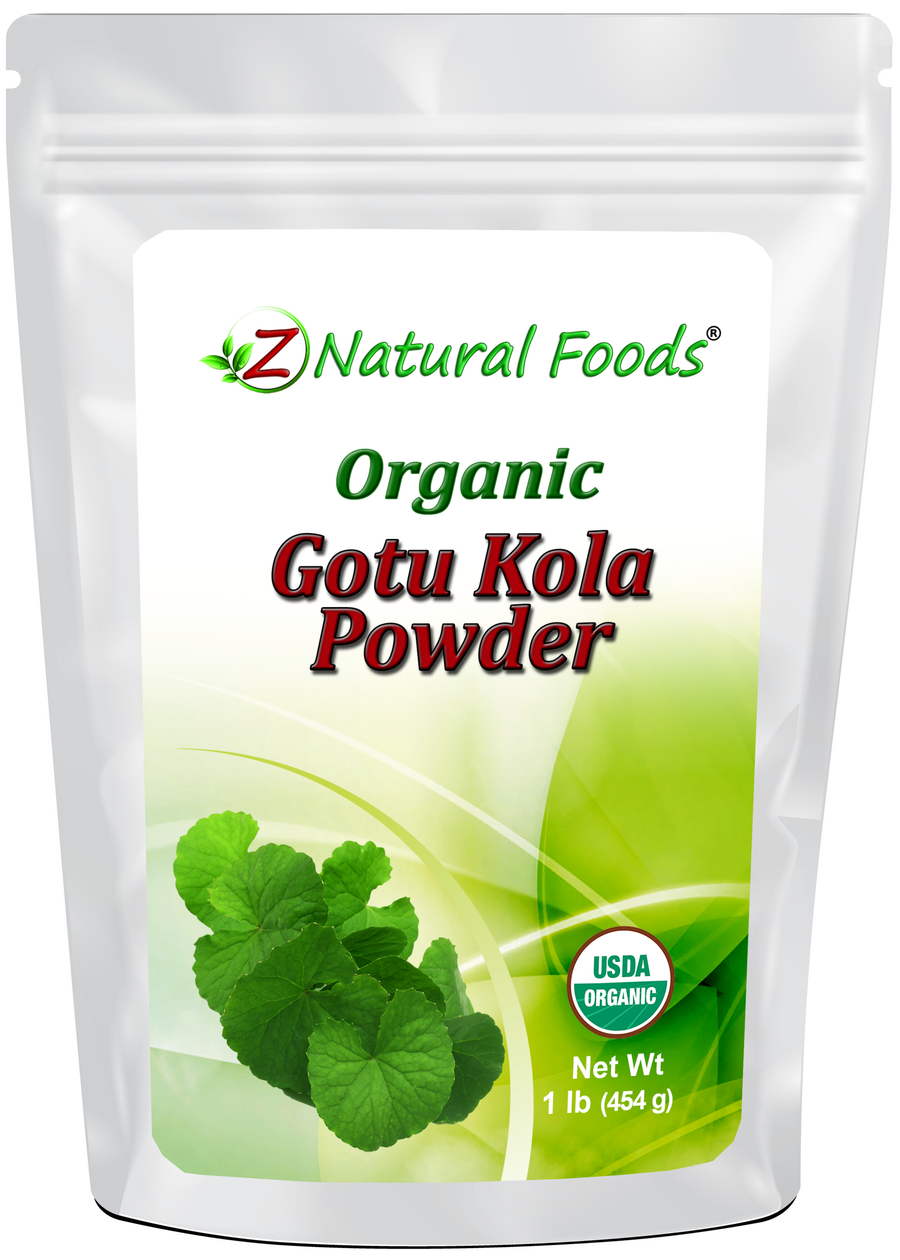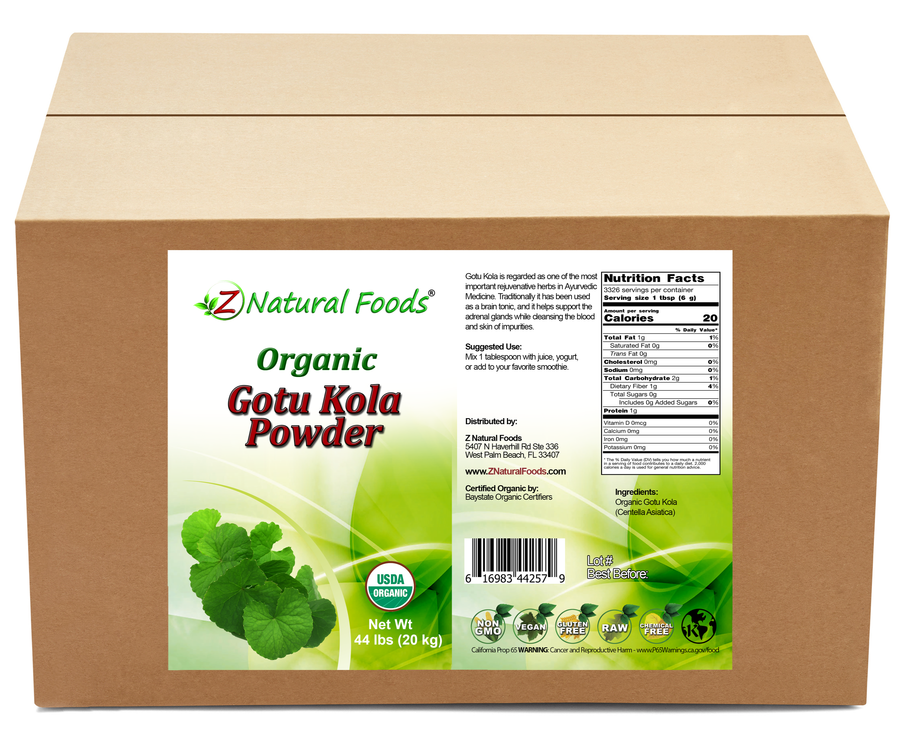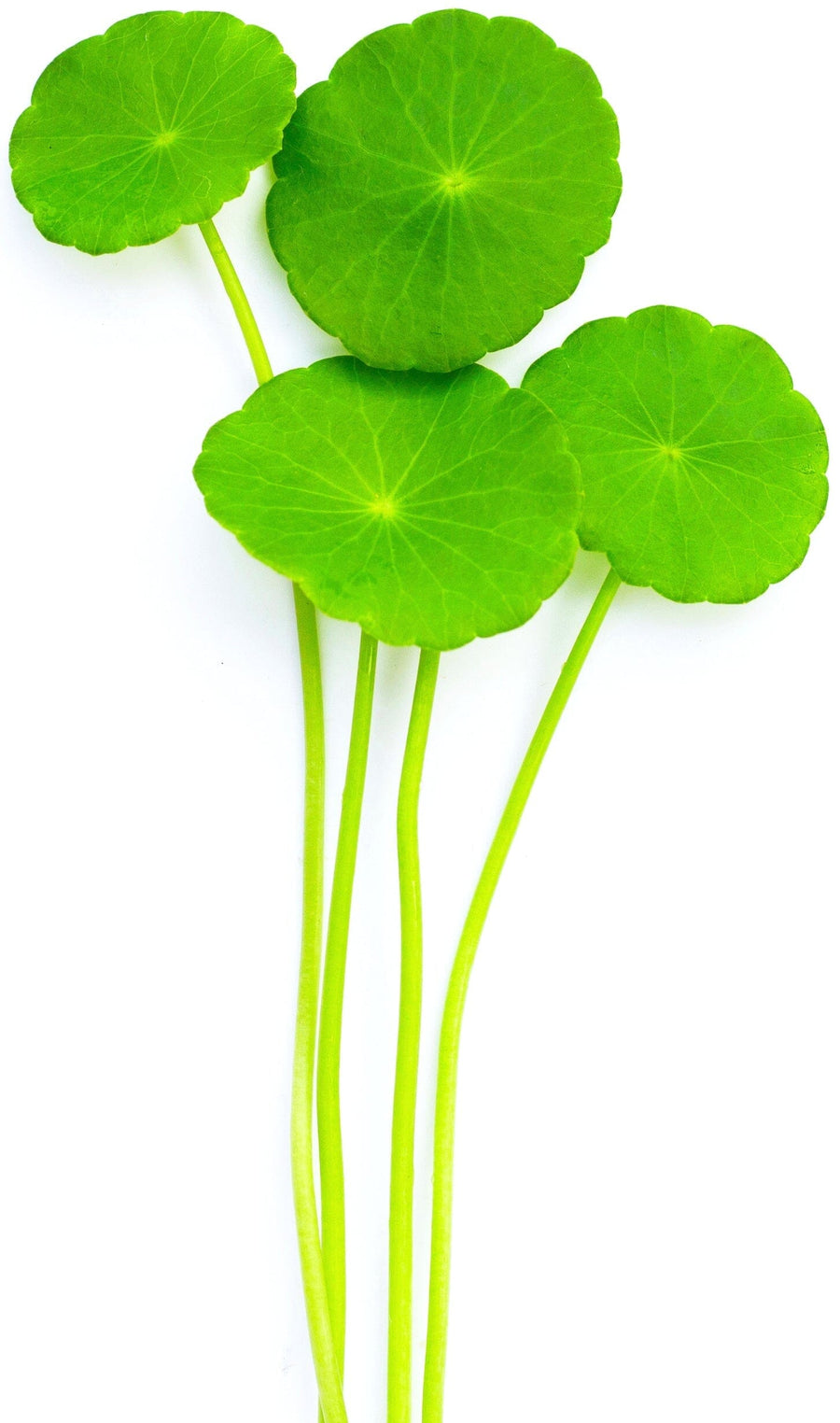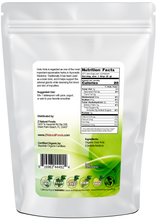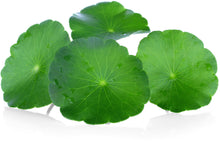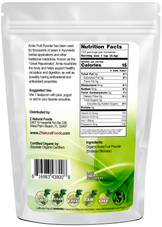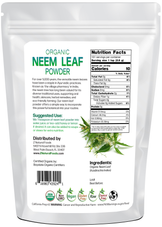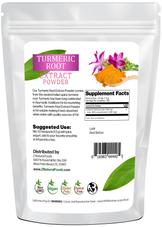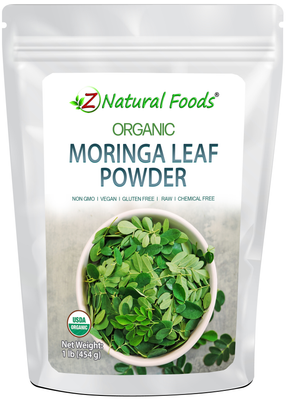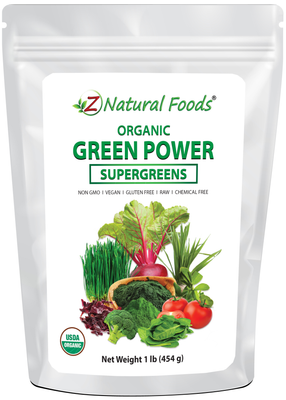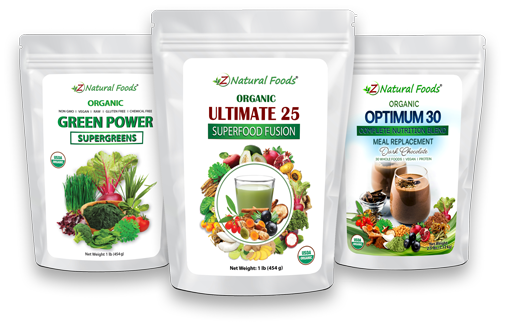About Product
Gotu Kola Powder is made from the dried leaves of the gotu kola plant, a perennial herb known for its mild, earthy flavor. Traditionally enjoyed as a tea or blended into herbal preparations, it can also be added to smoothies or incorporated into recipes.
Convenient and shelf-stable, this fine powder offers a simple way to explore a classic botanical ingredient with a long history of use in traditional cuisines and preparations. Its subtle taste makes it easy to mix into both drinks and foods.
Some research suggests that Gotu Kola may contain the following constituents:
- Minerals: Magnesium, Zinc, Selenium, Manganese
- Vitamins: Vitamin C, Thiamin, Riboflavin, Niacin, Beta carotene
- Amino Acids: Glutamic Acid, Glycine
- Triterpenes: Asiatic Acid, Madecassic Acid, Asiaticoside, Asiatic Acid, Madecassic Acid,, Oxyasiaticoside, Centelloside
- Triterpenoid Glycosides: Asiaticoside
- Volatile oil: Valerin
- Glycoside: Madicassoside
- Saponin Glycosides: Brahminoside, Brahmoside
This product is 100% natural and minimally processed. Taste, smell, texture, and color vary from batch to batch.
Suggested Use: Mix one tablespoon with juice and yogurt, or add to your favorite smoothie.
Other preparations:Infusion: Use the ratio of 1 tablespoon of product for every 8 ounces of distilled water. Bring water to a boil and then take off. Put tea in a mug with water and cover for 15 minutes. (This method is specific for whole-leaf herbs and teas).
Tincture: This method can take 15 to 30 days. You will need three items (a mason jar with a cover, the herb/herbs of your choice, and liquid for extracting). The extracting liquid can be alcohol, alcohol/ water combo, vinegar, or vegetable glycerin. Take the product and fill the jar ¾ full, add the liquid of your choice, and close the jar. Then shake the jar, so everything is well mixed. Give the jar a good shake several times a day. After 15 to 30 days, strain and bottle in glass tincture jars.
Mixing suggestions: To increase flavor and nutritional profile, combined with our bacopa leaf powder as a tincture or infusion.
Botanical Name: Centella Asiatica.
Other Names: Indian Pennywort, Marsh Penny, Spadeleaf, Tiger’s Herb, Brahmi, and Pennywort.
Parts Used: Gotu Kola Leaf.
Ingredients: Raw Gotu Kola Leaf.
Origin: Packaged with care in Florida, USA.
Certifications: Certified USDA Organic.
How to Maintain Optimum Freshness
- This product is packaged in airtight stand-up, resealable foil pouches for optimum freshness.
- Once opened, push the air out of the pouch before resealing it to preserve maximum potency.
- Keep your powder in a cool, dark, dry place.
This product is 100% natural and minimally processed:
Taste, smell, texture, and color vary from batch to batch. Go here to learn why our products may naturally vary.
The important protections we take to bring you safe and nutritious superfoods:
Please go here to discover the essential steps we take to deliver fresh, quality nutrition.
Bulk Quantities?
Need to order a large quantity of our products? We are happy to help! Please get in touch with our Bulk department to discuss the details.
* Product packaging, pictures, and origin may vary.
Sources & References
1. Pittella, Frederico, et al. Int J Mol Sci. 10(9): Antioxidant and Cytotoxic Activities of Centella asiatica (L) Urb. PubMed: U.S. National Library of Medicine and the National Institutes of Health. [Online] September 2009. http://www.ncbi.nlm.nih.gov/pmc/articles/PMC2769141/?tool=pubmed. DOI 10.3390/ijms10093713.
2. Apichartsrangkoon, A., Wongfhun, P. and Gordon, M.H. J Food Sci. 74(9): Flavor characterization of sugar-added pennywort (Centella asiatica L.) juices treated with ultra-high pressure and thermal processes. PubMed: U.S. National Library of Medicine and the National Institutes of Health. [Online] Nov-Dec 2009. http://www.ncbi.nlm.nih.gov/pubmed/20492095.
3. Halpern, Georges M. and Weverka, Peter. The Healing Trail: Essential Oils of Madagascar. s.l.: Basic Health Publications, Inc., 2003. ISBN 1591200164, 9781591200161.
4. Bagavan, A., et al. Vet Parasitol. 166(3-4): Adulticidal and larvicidal efficacy of some medicinal plant extracts against tick, fluke and mosquitoes. PubMed: U.S. National Library of Medicine and the National Institutes of HealthM. [Online] December 23, 2009. http://www.ncbi.nlm.nih.gov/pubmed/19819626.
5. Haftek, M., et al. Exp Dermatol. 17(11): Clinical, biometric and structural evaluation of the long-term effects of a topical treatment with ascorbic acid and madecassoside in photoaged human skin. PubMed: U.S. National Library of Medicine and the National Institutes of Health. [Online] November 2008. http://www.ncbi.nlm.nih.gov/pubmed/18503551.
6. Mato, Lugkana, et al. Centella asiatica Improves Physical Performance and Health-related Quality of Life in Healthy Elderly Volunteer. Oxford University Press: Evidenced-based Complementary and Alternative Medicine. [Online] October 30, 2009. http://www.ncbi.nlm.nih.gov/pubmed/19880441. DOI 10.1093/ecam/nep177.
7. Rao, K. G. Mohandas, Rao, S. Muddanna and Rao, S. Gurumadhva. Evid Based Complement Alternat Med. 6(2): Enhancement of Amygdaloid Neuronal Dendritic Arborization by Fresh Leaf Juice of Centella asiatica (Linn) During Growth Spurt Period in Rats. PubMed: U.S. National Library of Medicine and the National Institutes of Health. [Online] June 2009. http://www.ncbi.nlm.nih.gov/pmc/articles/PMC2686623/?tool=pubmed. DOI 10.1093/ecam/nem079.
8. Awad, R., et al. Can J Physiol Pharmacol 85(9): Effects of traditionally used anxiolytic botanicals on enzymes of the gamma-aminobutyric acid (GABA) system. MD Consult. [Online] September 1, 2007. http://www.mdconsult.com/das/citation/body/205390697-4/jorg=journal&source=MI&sp=20220147&sid=1012343295/N/20220147/1.html?issn=0008-4212#bib. DOI 10.1139/Y07-083.
9. Kaziulin, A.N., Petukhov, A.B. and Kucheriavy?, IuA. Vopr Pitan. 75(2): Efficiency of includes of bioactive substances in diet of patient with hepatic encephalopathy. PubMed: U.S. National Library of Medicine and the National Institutes of Health. [Online] 2006. http://www.ncbi.nlm.nih.gov/pubmed/16729760.
10. Visweswari, G., et al. Epilepsy Behav. 17(3): Evaluation of the anticonvulsant effect of Centella asiatica (gotu kola) in pentylenetetrazol-induced seizures with respect to cholinergic neurotransmission. PubMed: U.S. National Library of Medicine and the National Institutes of Health; Elsevier Inc. [Online] March 2010. http://www.ncbi.nlm.nih.gov/pubmed/20144879.
11. Haleagrahara, Nagaraja and Ponnusamy, Kumar. Neuroprotective effect of Centella asiatica extract (CAE) on experimentally induced parkinsonism in aged Sprague-Dawley rats. The Journal of Toxicological Sciences 35(1). [Online] February 2010. http://www.jstage.jst.go.jp/article/jts/35/1/35_41/_article. DOI 10.2131/jts.35.41.
12. Krishnamurthy, R.G., et al. J Neurosci Res. 87(11): Asiatic acid, a pentacyclic triterpene from Centella asiatica, is neuroprotective in a mouse model of focal cerebral ischemia. PubMed: U.S. National Library of Medicine and the National Institutes of Health. [Online] August 15, 2009. http://www.ncbi.nlm.nih.gov/pubmed/19382233.
13. Gnanapragasam, A., et al. Mol Cell Biochem. 294(1-2): Adriamycin induced myocardial failure in rats: protective role of Centella asiatica. PubMed: U.S. National Library of Medicine and the National Institutes of Health. [Online] January 2007. http://www.ncbi.nlm.nih.gov/pubmed/16786185.
14. Sharma, R. and Sharma, J. Phytother Res. 19(7): Modification of gamma ray induced changes in the mouse hepatocytes by Centella asiatica extract: in vivo studies. PubMed: U.S. National Library of Medicine and the National Institutes of Health. [Online] July 2005. http://www.ncbi.nlm.nih.gov/pubmed/16161023.
15. Cesarone, M.R., et al. Angiology. 52 (Suppl 2): Evaluation of treatment of diabetic microangiopathy with total triterpenic fraction of Centella asiatica: a clinical prospective randomized trial with a microcirculatory model.PubMed: U.S. National Library of Medicine and the National Institutes of Health. [Online] October 2001. http://www.ncbi.nlm.nih.gov/pubmed/11666124.
16. Bian, Guang-Xing, et al. Biological & Pharmaceutical Bulletin 31(3): Madecassoside Reduces Ischemia-Reperfusion Injury on Regional Ischemia Induced Heart Infarction in Rat. J-STAGE: The Pharmaceutical Society of Japan. [Online] 2008. http://www.jstage.jst.go.jp/article/bpb/31/3/31_458/_article. DOI 0.1248/bpb.31.458.
17. Incandela, L., et al. Angiology. 52 (Suppl 2): Total triterpenic fraction of Centella asiatica in the treatment of venous hypertension: a clinical, prospective, randomized trial using a combined microcirculatory model. PubMed: U.S. National Library of Medicine and the National Institutes of Health. [Online] October 2001. http://www.ncbi.nlm.nih.gov/pubmed/11666126.
18. Hussin, M., et al. J Food Sci. 74(2): Modulation of lipid metabolism by Centella asiatica in oxidative stress rats. PubMed: U.S. National Library of Medicine and the National Institutes of Health. [Online] March 2009. http://www.ncbi.nlm.nih.gov/pubmed/19323754.
19. Qinna, N., et al. Int J Impot Res. 21(5): A new herbal combination, Etana, for enhancing erectile function: an efficacy and safety study in animals. PubMed: U.S. National Library of Medicine and the National Institutes of Health. [Online] Sep-Oct 2009. http://www.ncbi.nlm.nih.gov/pubmed/19494825.
20. Muller, Daniel and Selfridge, Nancy J. chapter 46 - Fibromyalgia Syndrome. [book auth.] David Rakel. Integrative Medicine. Philadelphia, PA: Saunders, an imprint of Elsevier Inc., 2007. ISBN-13: 978-1-4160-2954-0; ISBN-10: 1-4160-2954-0.
21. Guo, J.S., Cheng, C.L. and Koo, M.W. Planta Med. 70(12): Inhibitory effects of Centella asiatica water extract and asiaticoside on inducible nitric oxide synthase during gastric ulcer healing in rats. PubMed: U.S. National Library of Medicine and the National Institutes of Health. [Online] December 2004. http://www.ncbi.nlm.nih.gov/pubmed/15643549.
22. Sastravaha, G., et al. J Int Acad Periodontol. 7(3): Adjunctive periodontal treatment with Centella asiatica and Punica granatum extracts in supportive periodontal therapy. PubMed: U.S. National Library of Medicine and the National Institutes of Health. [Online] July 2005. http://www.ncbi.nlm.nih.gov/pubmed/16022023.
23. di Paola, R., et al. 3,5-Dicaee Radic Res. 44(1): 4-malonylquinic acid reduced oxidative stress and inflammation in a experimental model of inflammatory bowel disease. PubMed: U.S. National Library of Medicine and the National Institutes of Health. [Online] January 2010. http://www.ncbi.nlm.nih.gov/pubmed/19886745.
24. Zieve, David, Juhn, Greg and Eltz, David R. Gotu kola. University of Maryland Medical Center Medical Reference: Complementary Medicine. [Online] October 15, 2009. http://www.umm.edu/altmed/articles/gotu-kola-000253.htm.
25. Zhang, L., et al. Phytomedicine: Protective effects of Asiaticoside on acute liver injury induced by lipopolysaccharide/D-galactosamine in mice. PubMed: U.S. National Library of Medicine and the National Institutes of Health; Elsevier GmbH. [Online] February 17, 2010. http://www.ncbi.nlm.nih.gov/pubmed/20171071.
26. Zhang, L.N., et al. Exp Toxicol Pathol.: Protective effects of asiaticoside on septic lung injury in mice. PubMed: U.S. National Library of Medicine and the National Institutes of Health; Elsevier GmbH. [Online] May 12, 2010. http://www.ncbi.nlm.nih.gov/pubmed/20471230.
27. Liu, M., et al. Int Immunopharmacol. 8(11): Anti-rheumatoid arthritic effect of madecassoside on type II collagen-induced arthritis in mice. PubMed: U.S. National Library of Medicine and the National Institutes of Health. [Online] November 2008. http://www.ncbi.nlm.nih.gov/pubmed/18652917.
28. Hong, S.S., et al. Arch Pharm Res. 28(4): Advanced formulation and pharmacological activity of hydrogel of the titrated extract of C. asiatica. PubMed: U.S. National Library of Medicine and the National Institutes of Health. [Online] April 2005. http://www.ncbi.nlm.nih.gov/pubmed/15918527.
29. Klövekorn, W., Tepe, A. and Danesch, U. Int J Clin Pharmacol Ther. 45(11): A randomized, double-blind, vehicle-controlled, half-side comparison with a herbal ointment containing Mahonia aquifolium, Viola tricolor and Centella asiatica for the treatment of mild-to-moderate atopic dermatitis. PubMed: U.S. National Library of Medicine and the National Institutes of Health. [Online] November 2007. http://www.ncbi.nlm.nih.gov/pubmed/18077922.
30. Draelos, Z.D., et al. Skinmed. 8(2): Evaluation of an onion extract, Centella asiatica, and hyaluronic acid cream in the appearance of striae rubra. PubMed: U.S. National Library of Medicine and the National Institutes of Health. [Online] Mar-Apr 2010. http://www.ncbi.nlm.nih.gov/pubmed/20527138.
31. Salas Campos, L., Fernándes Mansilla, M. and MartÃnez de la Chica, A.M. Rev Enferm. 28(5): Topical chemotherapy for the treatment of burn. PubMed: U.S. National Library of Medicine and the National Institutes of Health. [Online] May 2005. http://www.ncbi.nlm.nih.gov/pubmed/15981974.
32. Tholon, L., et al. J Cosmet Sci. 53(4): An in vitro, ex vivo, and in vivo demonstration of the lipolytic effect of slimming liposomes: An unexpected alpha(2)-adrenergic antagonism. PubMed: U.S. National Library of Medicine and the National Institutes of Health. [Online] Jul-Aug 2002. http://www.ncbi.nlm.nih.gov/pubmed/12219247.
33. Venardos, Kylie M., Kaye, David M. Current Medicinal Chemistry 14(14): Myocardial Ischemia-Reperfusion Injury, Antioxidant Enzyme Systems, and Selenium: A Review. IngentaConnect. [Online] June 2007. http://www.ingentaconnect.com/content/ben/cmc/2007/00000014/00000014/art00005. DOI 10.2174/092986707780831078.
34. Ivanov, V., Ivanova, S., Kalinovsky, T., Niedzwiecki, A., Rath, M. J Cardiovasc Pharmacol. 52(1): Plant-derived micronutrients suppress monocyte adhesion to cultured human aortic endothelial cell layer by modulating its extracellular matrix composition. Medscape: Medline Abstract. [Online] 2008. http://www.medscape.com/medline/abstract/18594473.
35. Capasso, Francesco. Phytotherapy: a quick reference to herbal medicine. s.l.: Springer, 2003. ISBN 3540000526, 9783540000525.
36. Gnanapragasam, A., et al. Life Sciences 76(5): Protective effect of Centella asiatica on antioxidant tissue defense system against adriamycin induced cardiomyopathy in rats. ScienceDirect. [Online] December 17, 2004. http://dx.doi.org/10.1016/j.lfs.2004.09.009.
37. Eberhardt, Robert T. and Raffetto, Joseph D. Circulation 111: Chronic Venous Insufficiency. American Heart Association, Inc. [Online] 2005.http://circ.ahajournals.org/cgi/content/full/111/18/2398.
38. Barclay, Laurie. A Scientific Solution to Unsightly Cellulite. Life Extension Magazine. [Online] August 2008. http://www.lef.org/magazine/mag2008/aug2008_A-Scientific-Solution-to-Unsightly-Cellulite_01.htm.
39. Thorne Research, Inc. Monograph: Centella asiatica Monograph. Alternative Medicine Review 12(1). [Online] March 2007. http://www.thorne.com/media/alternative_medicine_review/2007/Volume_12/Number_1/Centella-asiatica-mono.pdf.
40. Stargrove, Mitchell Bebel, Treasure, Jonathan and McKee, Dwight L. Herb, Nutrient, and Drug Interactions. s.l.: Elsevier Health Sciences, 2008. ISBN 0323029647, 9780323029643.
41. Incandela, L., et al. Angiology. 52(Suppl 2): Modification of the echogenicity of femoral plaques after treatment with total triterpenic fraction of Centella asiatica: a prospective, randomized, placebo-controlled trial. PubMed: U.S. National Library of Medicine and the National Institutes of Health. [Online] October 2001. http://www.ncbi.nlm.nih.gov/pubmed/11666127.
42. International Diabetes Federation. How does Diabetes Lead to Cardiovascular Disease? International Diabetes Federation. [Online] 2005. http://www.cvd.idf.org/Double_Jeopardy/How_does_Diabetes_Lead_to_CVD_/index.html.
43. Duke, James A. The Green Pharmacy Herbal Handbook: Your Everyday Reference to the Best Herbs for Healing. 2002: Macmillan. ISBN 0312981511, 9780312981518.
44. Murad, Howard. The Cellulite Solution: A Doctor's Program for Losing Lumps, Bumps, Dimples, and Stretch Marks. s.l.: Macmillan, 2006. ISBN 0312334621, 9780312334628.
45. Barel, Andre O., Paye, Marc and Maibach, Howard I. Handbook of Cosmetic Science and Technology, Third Edition. 2009: Informa Health Care. ISBN 1420069632, 9781420069631.
46. Goldman, Mitchel P., Bacci, Pier Antonio and Leibaschoff, Gustavo. Cellulite: pathophysiology and treatment. s.l.: Marcel Dekker, 2006. ISBN 0824729854, 9780824729851.
47. Baran, Robert and Maibach, Howard I. Textbook of cosmetic dermatology. s.l.: Taylor & Francis, 2004. ISBN 1841843113, 9781841843117.
48. Khan, Misbah H., et al. Journal of the American Academy of Dermatology 62(3): Treatment of cellulite Part I. Pathophysiology. MD Consult. [Online] March 2010. http://www.mdconsult.com/das/article/body/202578781-3/jorg=journal&source=MI&sp=22941240&sid=1003163609/N/735326/1.html?issn=0190-9622.
49. Rawlings, A. V. International Journal of Cosmetic Science 28: Cellulite and its treatment. Society of Cosmetic Scientists and the Socie'te' Franc¸aise de Cosme'tologie. [Online] 2006. http://assets0.pubget.com/pdf/18489274.pdf.
50. Catania 42(370): Efficacy of Melilotus officinalis (L.) Pallas in cellulitis treatment. Bollettino Accademia Gioenia Sci. Nat. [Online] 2009. .
51. Thomson, Graeme E. The Health Benefits of Traditional Chinese Plant Medicines: Weighing the scientific evidence. Australian Government: Rural Industries Research and Development Corporation. [Online] February 2007. https://rirdc.infoservices.com.au/downloads/06-128.pdf.
52. Yendo, A.C., et al. Mol Biotechnol.: Production of Plant Bioactive Triterpenoid Saponins: Elicitation Strategies and Target Genes to Improve Yields. PubMed: U.S. National Library of Medicine and the National Institutes of Health. [Online] March 4, 2010. http://www.ncbi.nlm.nih.gov/pubmed/20204713.
53. Coldren, Christopher D., et al. Planta Med 69(8): Gene Expression Changes in the Human Fibroblast Induced by Centella asiatica Triterpenoids. Thieme eJournals. [Online] 2003. https://www.thieme-connect.com/ejournals/abstract/plantamedica/doi/10.1055/s-2003-42791. DOI 10.1055/s-2003-42791.
54. Dweck, Anthony C. Natural Ingredients Used in Cosmeceuticals. [book auth.] Kenneth A. Walters and Michael S. Roberts. Dermatologic, Cosmeceutic, and Cosmetic Development: Therapeutic and Novel Approaches. s.l.: CRC Press, 2007.
55. Barclay, Laurie. Medscape Medical News: Management of Venous Ulcers Reviewed. Medscape Today. [Online] April 29, 2010. http://www.medscape.com/viewarticle/720987.
56. Chiummariello, S., et al. G Chir. 30(11-12): Multicentric study on a topical compound with lymph-draining action in the treatment of the phlebostatic ulcer of the inferior limbs. PubMed: U.S. National Library of Medicine and the National Institutes of Health. [Online] Nov-Dec 2009. http://www.ncbi.nlm.nih.gov/pubmed/20109380.
57. Sy, G.Y., et al. Dakar Med. 50(2): Healing activity of methanolic extract of the barks of Spathodea campanulata Beauv (Bignoniaceae) in rat experimental burn model. PubMed: U.S. National Library of Medicine and the National Institutes of Health. [Online] 2005. http://www.ncbi.nlm.nih.gov/pubmed/16295762.
58. Healthwise. Skin Problems & Treatments Health Center: Varicose Veins - Topic Overview. WebMD. [Online] February 11, 2008. http://www.webmd.com/skin-problems-and-treatments/tc/varicose-veins-topic-overview.
59. Levine, Norman. Skin Problems & Treatments Health Center: Your Skin and Stretch Marks. WebMD. [Online] February 28, 2008. http://www.webmd.com/skin-problems-and-treatments/stretch-marks.
60. Leibaschoff, Gustavo. Medical Treatment of Cellulite. [book auth.] Mitchel P. Goldman, Pier Antonio Bacci and Gustavo Leibaschoff. Cellulite: pathophysiology and treatment. s.l.: Marcel Dekker, 2006, Vol. Volume 37 of Basic and clinical dermatology. ISBN 0824729854, 9780824729851.
61. http://www.ars-grin.gov/duke/
* Reviews & Success Stories Disclaimer
Product reviews solely reflect the views and opinions expressed by the contributors and not those of Z Natural Foods. Z Natural Foods does not verify or endorse any claims made in these reviews. Statements have not been evaluated by the FDA and are not intended to diagnose, treat, cure, or prevent any disease or health condition.REFERRAL PROGRAM
Share your personal link to your friends and welcome them with rewards. Claim yours when they make their first purchase.

GIVE
$10 off discount

GET
$10 off discount
Other products in the same category
Spinach Powder - Organic
$31.60
